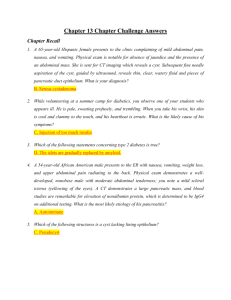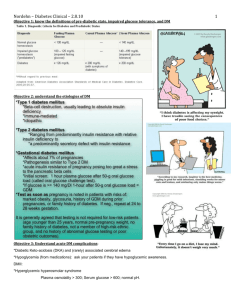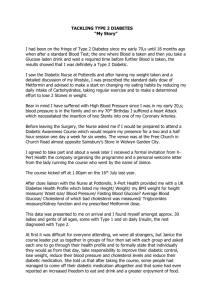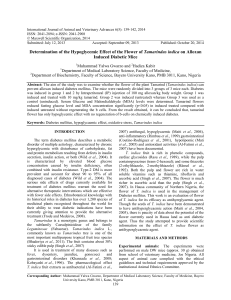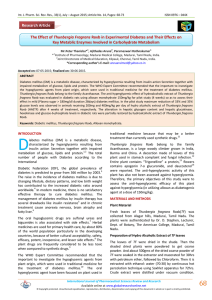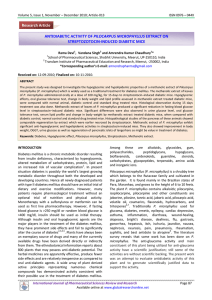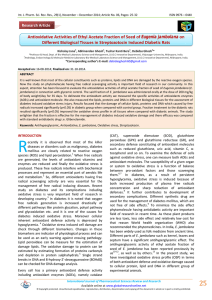Journal Assignments
advertisement
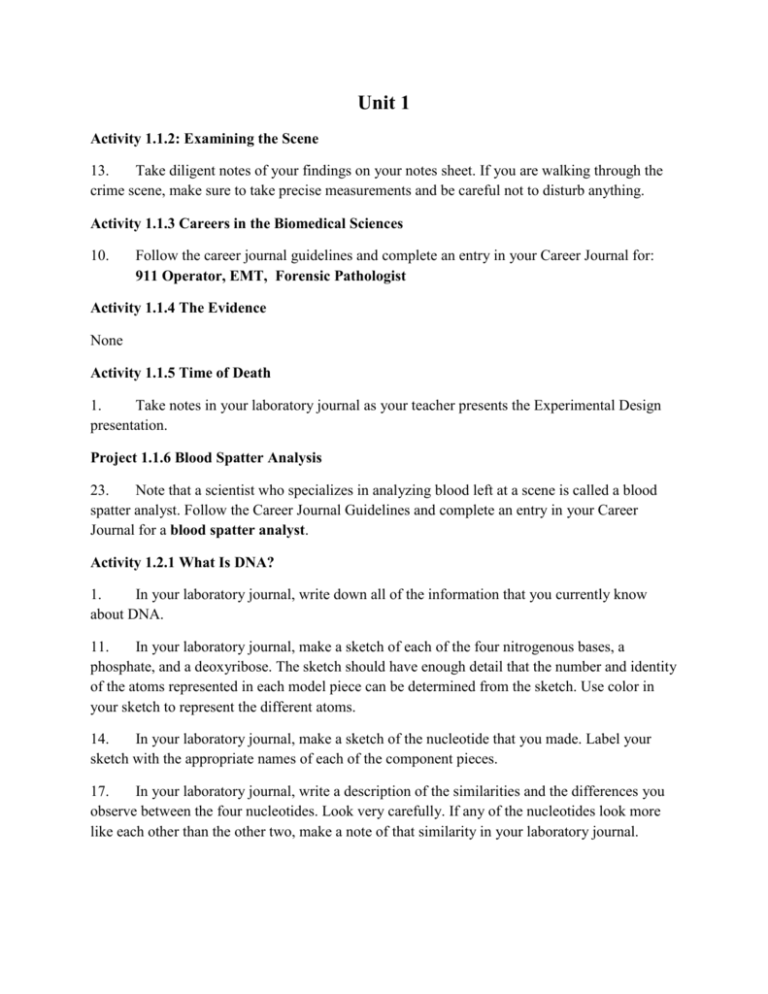
Unit 1 Activity 1.1.2: Examining the Scene 13. Take diligent notes of your findings on your notes sheet. If you are walking through the crime scene, make sure to take precise measurements and be careful not to disturb anything. Activity 1.1.3 Careers in the Biomedical Sciences 10. Follow the career journal guidelines and complete an entry in your Career Journal for: 911 Operator, EMT, Forensic Pathologist Activity 1.1.4 The Evidence None Activity 1.1.5 Time of Death 1. Take notes in your laboratory journal as your teacher presents the Experimental Design presentation. Project 1.1.6 Blood Spatter Analysis 23. Note that a scientist who specializes in analyzing blood left at a scene is called a blood spatter analyst. Follow the Career Journal Guidelines and complete an entry in your Career Journal for a blood spatter analyst. Activity 1.2.1 What Is DNA? 1. In your laboratory journal, write down all of the information that you currently know about DNA. 11. In your laboratory journal, make a sketch of each of the four nitrogenous bases, a phosphate, and a deoxyribose. The sketch should have enough detail that the number and identity of the atoms represented in each model piece can be determined from the sketch. Use color in your sketch to represent the different atoms. 14. In your laboratory journal, make a sketch of the nucleotide that you made. Label your sketch with the appropriate names of each of the component pieces. 17. In your laboratory journal, write a description of the similarities and the differences you observe between the four nucleotides. Look very carefully. If any of the nucleotides look more like each other than the other two, make a note of that similarity in your laboratory journal. Activity 1.2.2 DNA Extraction None Activity 1.2.3 DNA Analysis 14. Follow the Career Journal Guidelines and complete an entry in your Career Journal for a forensic DNA analyst. Activity 1.3.1 The Autopsy 13. Define the following terms in your laboratory journal: cause of death and manner of death. Activity 1.3.2 Confidentiality 1. Take notes in your laboratory journal as your teacher presents the HIPAA presentation. Activity 1.3.3 Was It a Crime? 4. Follow the Career Journal Guidelines and complete an entry in your Career Journal for the following careers: Medical Examiner, Toxicologist, Morgue Assistant Unit 2 Activity 2.1.1 Diagnosing Diabetes 5. Copy the table below into your laboratory journal. Time of Blood Collection (minutes after drinking glucose solution) 0 (Baseline Level) 30 60 90 120 Glucose Level in the Blood (milligrams/deciliter) Anna Garcia Glucose Level in the Blood (milligrams/deciliter) Glucose Level in the Blood (milligrams/deciliter) Patient A Patient B 11. Graph your GTT data to clearly demonstrate how glucose levels changed over time. Graph all three patients’ information on the same graph. Use a different color or pattern line for each patient. If you are graphing by hand, complete your work in your laboratory journal. If you are graphing using Excel, print a copy of your final graph and include it in your laboratory journal. 26. Using a full page, draw the framework for a Venn diagram in your notes. On one side, you will list facts about Type 1 diabetes. Use the other side to list facts about Type 2 diabetes. Use the intersecting section to list facts that apply to both forms of the disease. Add a clear heading to each section of the Venn diagram. 27. Fill in the Venn diagram with information you know at this point regarding the two diseases. Make sure to add the information you researched about risk factors in Step 25. You will add additional information about symptoms, diagnosis, physiological cause of the disease, short and long-term effects of the disease, preventative measures, as well as treatment options, as you move through the unit. Project 2.1.2 The Insulin Glucose Connection 1. Brainstorm ways that you can determine whether a website is credible. Record your ideas in your laboratory journal and discuss these features with a partner. 2. In your laboratory journal, list two pros and two cons of using the Internet to research current science topics. Activity 2.1.3 Feedback 14. Place a copy of your completed feedback loop in your laboratory journal. Project 2.2.1 Food Testing 3. Copy the data table shown below into your laboratory journal. Control Results Negative Control Sample (water) Positive Control Sample (test material) Standard Test #1: Glucose Standard Test #2: Starch Standard Test #3: Protein Standard Test #4: Lipids Activity 2.2.2 Food Labels None Activity 2.2.3 The Biochemistry of Food 2. Complete Part I: Chemistry Basics of the interactive presentation. Take notes in your laboratory journal so you can refer to them later. Be sure to pay close attention to the information on chemical bonds. Activity 2.2.4 Energy in Food 4. Draw the following data table in your laboratory journal. Measurements Food used Mass of empty can (g) Mass of can plus water (g) Minimum temperature of water (°C) Maximum temperature of water (°C) Initial mass of food (g) Final mass of food (g) Sample 1 Sample 2 40. Draw the following Data Analysis Table in your laboratory journal. Calculations Sample 1 Sample 2 Mass of water (g) Change in temperature of water (°C) Change in mass of food sample (g) Energy gained by water (chemistry calorie) Energy content of food sample (chemistry calorie per gram) Energy content of food sample (food calorie per gram) 41. Complete the calculations described in steps 43-48 in your laboratory journal; show and label each step of your calculations. 51. Follow the Career Journal Guidelines and complete an entry in your Career Journal for the following two careers. Biochemist, Food Scientist or Technologist Activity 2.3.1 A Day in the Life of a Diabetic 3. Note that your guide should focus on daily life with the disease. At this point, do not focus on complications or short and long term health risks associated with being a diabetic. You want to be honest about what life will be like, but you want to provide some comfort and clarity to a person who is most likely overwhelmed and scared. Your guide should include (but is not limited to) the items listed below. How you address each topic is up to you. • A discussion of three biomedical professionals who could be of assistance to a diabetic. Include a general description of how their specific skills could be of use to a diabetic. Choose from the list below or add additional careers as approved by your teacher. Note that you will complete career journal entries for these three professionals later in this activity. o Nutritionist or dietician o Endocrinologist o Primary care physician o Certified diabetic educator (CDE) o Ophthalmologist o Clinical researcher o Podiatrist o Psychologist or Psychiatrist Project 2.3.2: Diabetic Emergency! No Entry Activity 2.3.3 Complications of Diabetes No Entry Problem 2.3.4: The Future of Diabetes Management and Treatment 2. Keep a list of your top ideas in your laboratory journal. 6. Design your innovation with your team. Keep notes in your laboratory journal. Include a drawing or model of your idea (if applicable) or a detailed description of how the innovation would work in the body. Activity 3.1.1 Blood Detectives 13. Create an accurate and detailed drawing in your laboratory journal using colored pencils of what you see. Identify the different components of blood that you researched in Step 5. Label this drawing as “Normal Blood.” 18. Create an accurate and detailed drawing in your laboratory journal of what you see. Label the different components that you researched in Step 5. Label this drawing as “Anna Garcia.” Activity 3.1.2 Sickle Cell Diaries 5. Make a graphic organizer in your laboratory journal that includes the following categories: symptoms, benefits associated with treatment, risks associated with treatment, biomedical professionals involved, and lifestyle concerns. 11. Write two journal entries from the perspective of your assigned patient or from the perspective of the patient’s parents. Include the following information in your journal entries: • The symptoms the patient is experiencing and how this is affecting daily life. • An explanation of what the treatment entails, including the risks and benefits • A description of at least two of the biomedical professionals working with the patient. One of the biomedical professionals must be a hematologist. The description must detail the role the professionals played in the patient’s case. Note that you will complete career journal entries for these two professionals later in this activity. Activity 3.2.1 Protein Synthesis No entry Activity 3.2.2 The Genetic Code No entry Activity 3.2.3 Does Changing One Nucleotide Make a Big Difference? 27. Draw what you observe in your laboratory journal. Compare your prediction in Conclusion question 5 to what is happening on the screen. Activity 3.3.1 How is DNA Passed Through the Generations? 1. Pay attention and take notes in your laboratory journal as your teacher presents the Chromosomes presentation. Activity 3.3.2 Chromosomes - A Closer Look (Optional) No entry Activity 3.3.3 The Immortal Cells (Optional) No entry Activity 3.4.2 What's the Probability? 12. Record these percentages in your laboratory journal as the predicted likelihoods that an offspring would show the sickle cell phenotype or be a carrier. 21. Follow the Career Journal Guidelines and complete an entry in your Career Journal for a clinical geneticist. Activity 3.4.3 World Distribution of Sickle Cell Disease (Optional) No entry


